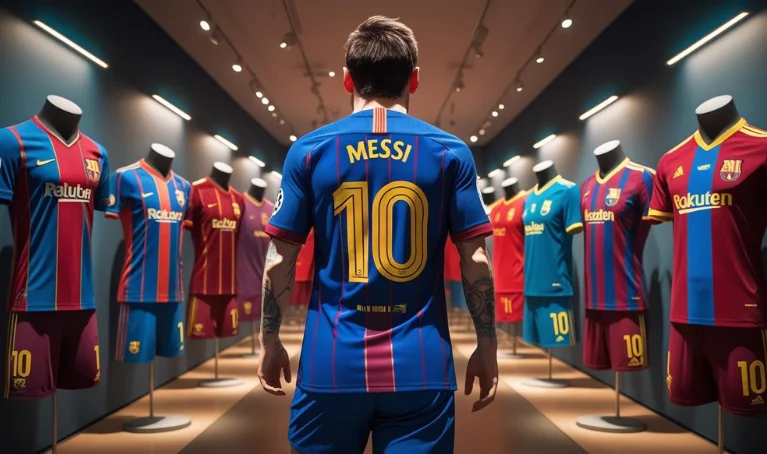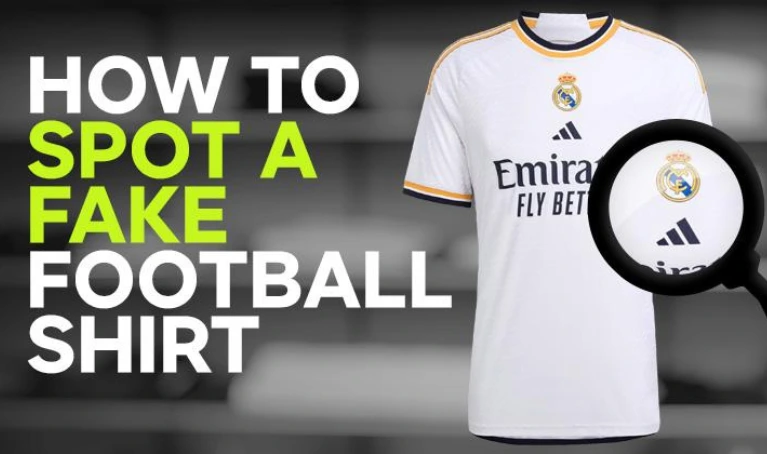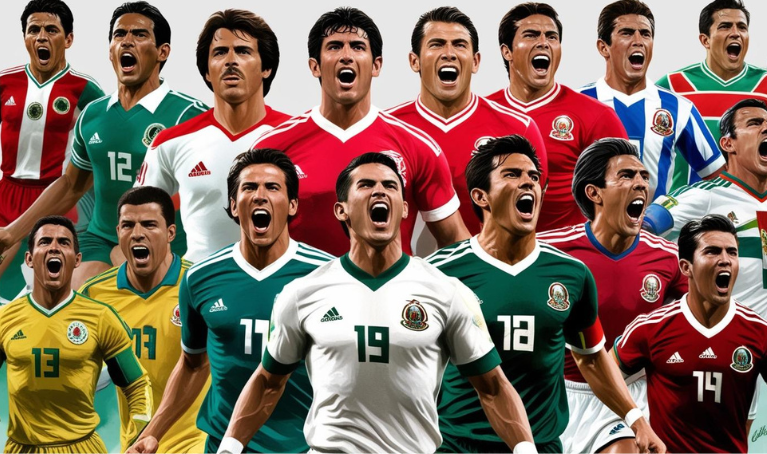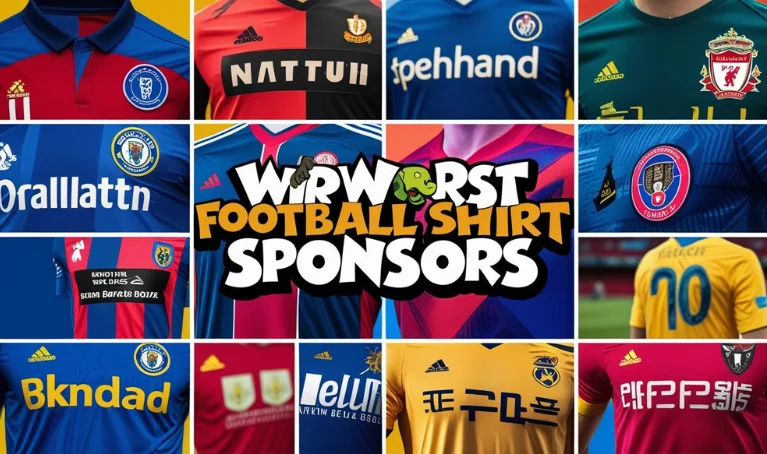

How to Spot Authentic Club Jerseys | 12 Best Tips
Football jerseys are more than just sportswear; they symbolize team pride, history, and personal connection. However, with counterfeit jerseys flooding the market, even the most seasoned fans can be misled. That’s why understanding how to spot authentic club jerseys is crucial for every supporter and collector. Genuine jerseys not only offer superior quality and comfort but also reflect your true loyalty to the club. This guide offers detailed insights to help you distinguish real football jerseys from fakes, ensuring that you make informed purchases and proudly wear your team’s true colors.
Table of Contents
Toggle12 Best Tips to Spot Authentic Club Jerseys
1. Examine the Material and Fabric Feel

Authentic football jerseys are crafted from high-quality materials designed for performance and comfort. Brands like Adidas and Nike utilize proprietary fabrics such as Climalite, Aeroready, and Dri-FIT, which are lightweight, breathable, and moisture-wicking. These materials ensure that players and fans remain comfortable during matches and everyday wear.
In contrast, counterfeit jerseys often use substandard fabrics that feel heavy, stiff, or scratchy. These materials lack breathability and can cause discomfort, especially during physical activity. Additionally, fake jerseys may have a shiny or overly glossy appearance, which is not characteristic of authentic kits. To assess the fabric, gently stretch and feel the material. Authentic jerseys will return to their original shape and feel smooth to the touch. If the fabric feels rough, overly elastic, or retains creases, it’s likely a counterfeit.
Also Read: Difference Between Player vs Fan Jerseys
2. Inspect the Quality of Stitching

The stitching on a football jersey is a clear indicator of its authenticity. Genuine jerseys exhibit precise, even stitching with no loose threads or irregularities. The seams are reinforced, ensuring durability and a clean finish. Counterfeit jerseys often have poor stitching quality, with uneven seams, loose threads, and inconsistent patterns. These flaws not only affect the jersey’s appearance but also its longevity. Over time, poorly stitched jerseys may unravel or develop holes.
Pay close attention to areas around the logos, sponsor patches, and numbers. Authentic jerseys will have these elements seamlessly integrated, while fakes may show signs of misalignment or fraying.
3. Scrutinize Care Instructions and Wash Tags

Care labels provide essential information about the jersey’s fabric composition and washing instructions. Authentic jerseys feature clear, well-printed labels with accurate translations and consistent font styles. These labels are securely attached and resistant to wear.
In contrast, counterfeit jerseys may have care labels with spelling errors, poor translations, or inconsistent formatting. The print may fade quickly, and the labels might be loosely attached or misplaced. Additionally, fake jerseys may include incorrect fabric care instructions that don’t align with the material used. Always examine the care labels closely. If the information appears dubious or the label quality is subpar, it’s a strong indication of a counterfeit product.
4. Verify Manufacturer and Sponsor Details
Authentic jerseys display manufacturer logos and sponsor details with precision and clarity. These elements are either embroidered or heat-pressed using high-quality techniques, ensuring they are durable and visually appealing.
Counterfeit jerseys often have logos and sponsor details that are misaligned, faded, or poorly stitched. The colors may be off, and the designs might not match official versions. Such discrepancies are telltale signs of fake jerseys. Cross-reference the jersey’s design with official images from the club or manufacturer. Any inconsistencies in logo placement, size, or color should raise concerns about authenticity.
5. Look for Authentic Tags and Labels

Authentic jerseys come with official tags and labels that include product codes, barcodes, and holograms. These identifiers are unique to each jersey and can be used to verify authenticity. Counterfeit jerseys may lack these tags or feature poorly replicated versions. The absence of a product code or the presence of generic tags is a red flag. Additionally, fake holograms may appear dull or lack the intricate details found in genuine ones. Always check for these identifiers and, if possible, use the product code to verify the jersey’s authenticity through official channels.
6. Compare Sizing and Fit
Authentic jerseys adhere to standardized sizing charts provided by manufacturers. They offer a consistent fit, ensuring comfort and proper proportions. Counterfeit jerseys often have inconsistent sizing, with measurements that don’t align with standard charts. They may fit too tightly or loosely, and the proportions can be off, leading to discomfort and an unflattering appearance. When purchasing a jersey, refer to the manufacturer’s sizing guide and compare it to the jersey’s measurements. Discrepancies in sizing are a potential indicator of a fake product.
7. Evaluate the Packaging
Authentic jerseys are packaged with care, often including branded bags, tags, and informational inserts. The packaging reflects the quality and attention to detail associated with official merchandise. In contrast, counterfeit jerseys may come in generic or unbranded packaging. The materials used may be flimsy, and the presentation lacks the polish of genuine products. Additionally, fake jerseys might be shipped without protective coverings, increasing the risk of damage during transit. Inspect the packaging for branding elements, quality materials, and completeness. Subpar packaging is often a sign of counterfeit merchandise.
8. Examine the Condition
New authentic jerseys should be in pristine condition, free from stains, tears, or signs of wear. The fabric should be clean, and all elements should be intact and properly affixed. Counterfeit jerseys may exhibit defects such as loose threads, misaligned logos, or discoloration. These imperfections indicate poor manufacturing processes and lack of quality control. Before purchasing, thoroughly inspect the jersey for any signs of damage or irregularities. A genuine product will meet high-quality standards and present no flaws.
9. Verify Provenance
Understanding the jersey’s origin can provide insights into its authenticity. Authentic jerseys are typically manufactured in specific countries and facilities authorized by the brand. Counterfeit jerseys may originate from unauthorized factories and lack proper documentation. They might also be distributed through unofficial channels, making it difficult to trace their source. Request information about the jersey’s origin, including manufacturing details and distribution channels. Lack of transparency or vague responses can indicate a counterfeit product.
10. Compare with Trusted References

Comparing the jersey in question with images and descriptions from official sources can help identify discrepancies. Official club websites, authorized retailers, and reputable collectors provide accurate representations of authentic jerseys. Look for differences in design elements, colors, and placements. Even minor deviations can signify a counterfeit product. Utilizing trusted references ensures a reliable comparison and aids in verifying authenticity.
11. Be Wary of Red Flags
Certain warning signs can indicate a counterfeit jersey. These include significantly low prices, sellers with limited or negative reviews, and lack of detailed product information. Additionally, be cautious of sellers who are unwilling to provide additional photos, answer questions, or offer return policies. Transparency and customer service are hallmarks of reputable sellers. Trust your instincts. If something feels off or too good to be true, it’s best to proceed with caution or avoid the purchase altogether.
12. Pay Attention to Price and Source
Authentic jerseys are priced to reflect their quality, brand value, and licensing fees. While discounts and sales occur, prices that are significantly lower than the market average should raise suspicion. Purchasing from official club stores, authorized retailers, or reputable online platforms ensures a higher likelihood of obtaining genuine products. Avoid buying from unknown websites, street vendors, or unauthorized sellers, as these sources are more likely to distribute counterfeit merchandise. Investing in authentic jerseys supports your team and ensures you receive a product that meets quality standards.
Where to Buy Authentic Club Jerseys in India
If you’re looking to buy authentic football jerseys in India, SS E-commerce is the go-to destination for genuine football merchandise. Specializing in official, retro, and rare football shirts, the store is trusted by collectors and passionate fans alike. Every jersey on SS E-commerce is sourced from licensed manufacturers like Nike, Adidas, Puma, and Umbro, ensuring top-notch quality and authenticity. From vintage classics to iconic kits from historic seasons, each piece is thoroughly verified with official tags, accurate sponsor details, and premium fabric. With detailed product descriptions, sizing charts, and secure shopping features, SS E-commerce stands out as the most reliable place to own a true piece of football history in India.
Conclusion
Buying an authentic football jersey is more than just owning a piece of fabric—it’s about holding a piece of football history and passion. Genuine jerseys tell stories that counterfeit copies simply can’t match, whether from iconic matches or limited-edition releases. In a market full of lookalikes, it’s crucial to be careful: feel the fabric, check the stitching and tags, and take your time to compare with trusted sources. If in doubt, seek advice from trusted communities or platforms like ssecommerce, where authenticity is guaranteed. Choosing a real jersey means investing in quality, durability, and supporting the sport you love while proudly wearing its true legacy.
FAQs
How can I tell if a football jersey is authentic or fake?
Start by checking the material quality, stitching, tags, and care labels. Authentic jerseys will have clean finishes, official product codes, and brand holograms. Compare it with photos on the club’s official website.
What are the key signs of a counterfeit football shirt?
Look out for poor stitching, misspelled tags, uneven logo placement, and incorrect sizing. Counterfeit shirts often feel off in terms of fabric and may come in flimsy packaging with no official branding.
Do authentic jerseys always come with official tags and labels?
Yes, authentic jerseys from brands like Adidas, Nike, and Puma include tags with product codes, care instructions, and often a hologram or unique barcode to verify the product.
What should I check in the stitching to confirm authenticity?
Authentic jerseys have uniform, tight stitching—especially around the logos and crests. Loose threads, inconsistent seam lines, or fraying edges are usually signs of a fake.
How important is the fabric quality when spotting fakes?
Fabric quality is one of the first giveaways. Real jerseys use performance-grade materials that are breathable and moisture-wicking. Fakes often use stiff, plastic-like or overly shiny fabric that lacks comfort and durability.












